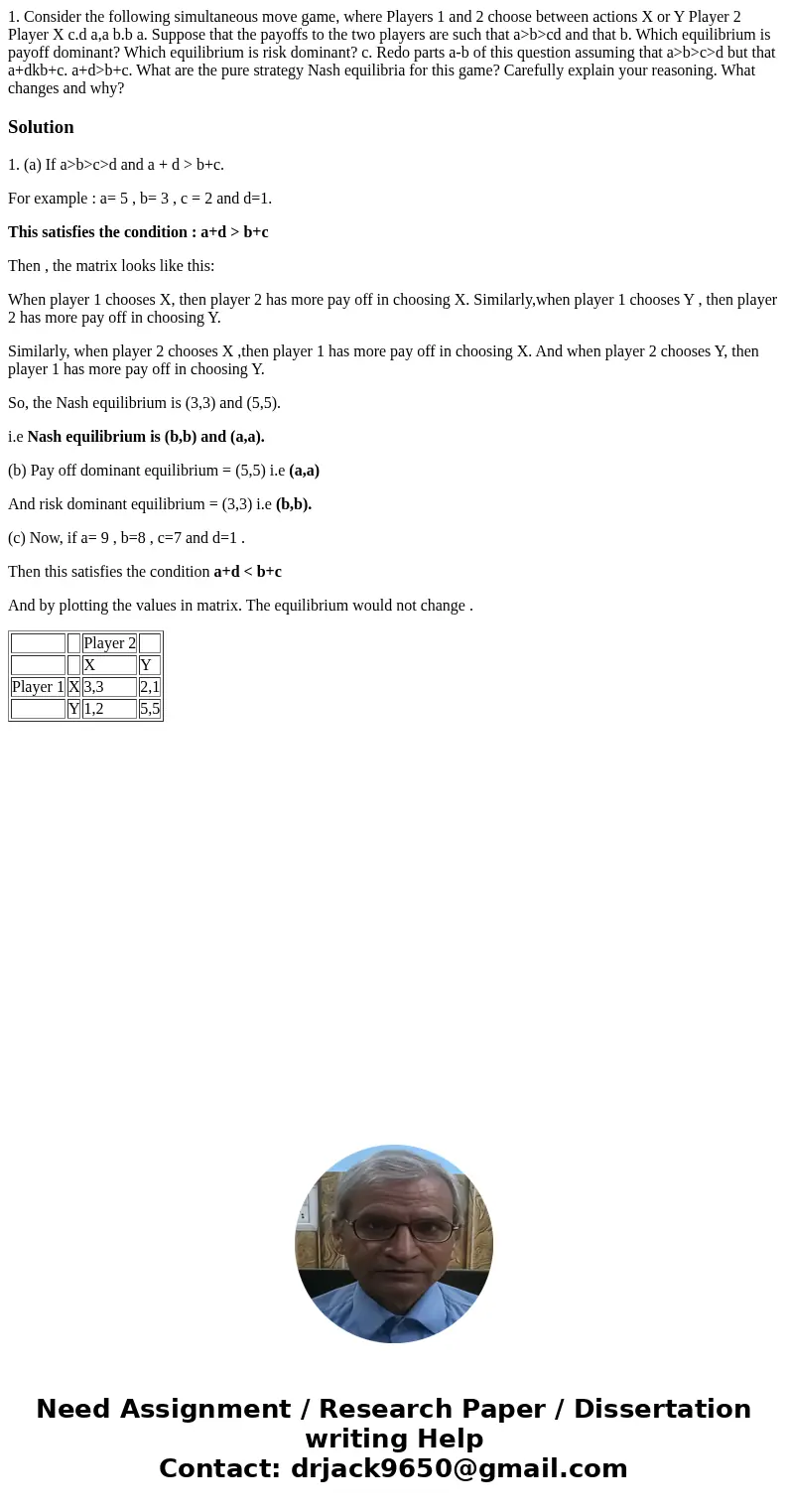1 Consider the following simultaneous move game where Player
Solution
1. (a) If a>b>c>d and a + d > b+c.
For example : a= 5 , b= 3 , c = 2 and d=1.
This satisfies the condition : a+d > b+c
Then , the matrix looks like this:
When player 1 chooses X, then player 2 has more pay off in choosing X. Similarly,when player 1 chooses Y , then player 2 has more pay off in choosing Y.
Similarly, when player 2 chooses X ,then player 1 has more pay off in choosing X. And when player 2 chooses Y, then player 1 has more pay off in choosing Y.
So, the Nash equilibrium is (3,3) and (5,5).
i.e Nash equilibrium is (b,b) and (a,a).
(b) Pay off dominant equilibrium = (5,5) i.e (a,a)
And risk dominant equilibrium = (3,3) i.e (b,b).
(c) Now, if a= 9 , b=8 , c=7 and d=1 .
Then this satisfies the condition a+d < b+c
And by plotting the values in matrix. The equilibrium would not change .
| Player 2 | |||
| X | Y | ||
| Player 1 | X | 3,3 | 2,1 |
| Y | 1,2 | 5,5 |

 Homework Sourse
Homework Sourse